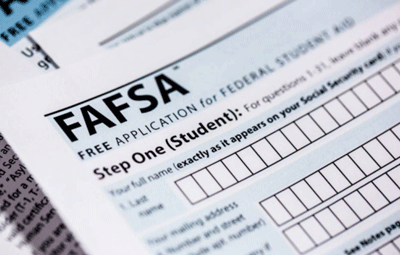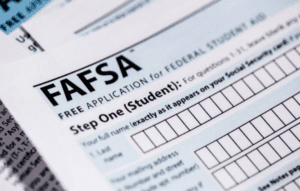When looking for a college to attend, figuring out how to manage those expensive payments can be stressful. Applying for governmental student aid can potentially offer substantial support but also may seem scary to students and parents unfamiliar with the process. We know this unique period can be a journey, and so we’ve compiled some important information that can help you fill out the FAFSA with confidence.
What Does the FAFSA Do?
The Free Application for Federal Student Aid (FAFSA) is a governmental resource for college students seeking any form of student aid. These include grants, scholarships and forms of work study without repayment. This form is free to all students, making it easy to begin filling one out within a few clicks.
FAFSA is used by an average of 17 million students each year, all from different cultural and financial backgrounds. Upon completing the form, your information is shared with schools of your choice, allowing them to work with FAFSA’s information to create a potential offer of aid.
For the sake of preventing fraud and misuse of the form, the US Department of Education actively flags potentially dubious activity within FAFSA forms. This is a .gov website, meaning you don’t need to worry when submitting your personal information.
Most importantly, a completed FAFSA form is often required by many schools before you can receive school-granted scholarships. Schools use the information provided by FAFSA to determine an individual student’s financial eligibility.
What You Need to Have On Hand
You will need to submit several important personal documents, some of which you may need extra time to acquire. The official Student Financial Aid website provides this list of potentially necessary documents for the upcoming 2025-26 school year:
- Tax returns
- Records of child support received
- Current balances of cash, savings, and checking accounts
- Net worth of investments, businesses, and farms
- Your parent’s SSN (if you are a dependent student)
Whether or not some of these documents are needed for your form depends on various factors, so it helps to have them handy, either for the current form or for later years.
As shown in the list of resources above, dependent students will need to provide the personal information of their parents. Some of this can be completed by the parents themselves on their own accounts, so long as you provide them with access on your form.
Update Annually
Your family’s financial situation may change during your years of study. Because of this, your eligibility for aid is assessed annually, and you will need to fill out a new FAFSA each year. Without an updated FAFSA, you will not be able to receive any amount of financial aid.
While your first time filling out the FAFSA may be more time-consuming than you expect, the process will be streamlined for later years since you will be largely updating only information that has seen changes since the last submission. Even if you decide to transfer schools at a later point, you can simply change the school listed on your FAFSA and carry over existing information.
Be Proactive and Submit Early
While the FAFSA form is free to submit, there are crucial deadlines involved. There is a unique deadline for your school or schools of interest, your state of legal residency, and the federal government. While the federal deadline is typically later than the other two, it is beneficial to get on top of filling out the form as soon as possible.
And in case you’re waiting for there to be a catch, don’t worry! By submitting your FAFSA form, you are not committing to every loan, scholarship, or grant that you are potentially offered. You will be able to accept or refuse any of the grants, scholarships, or loans included in your letter.
Here we go . . .
Filling out the FAFSA is straightforward, but you will need to keep the following steps in mind:
1. Create a Student Aid account.
2. Gather all important documents (see list from before) and ensure they are up to date.
3. Determine your dependency status.
4. Fill out the FAFSA (and have your parent fill out their part, if applicable).
The FAFSA form for the 2026–27 year opens on October 1, 2025. Complete it with confidence at studentaid.gov.





